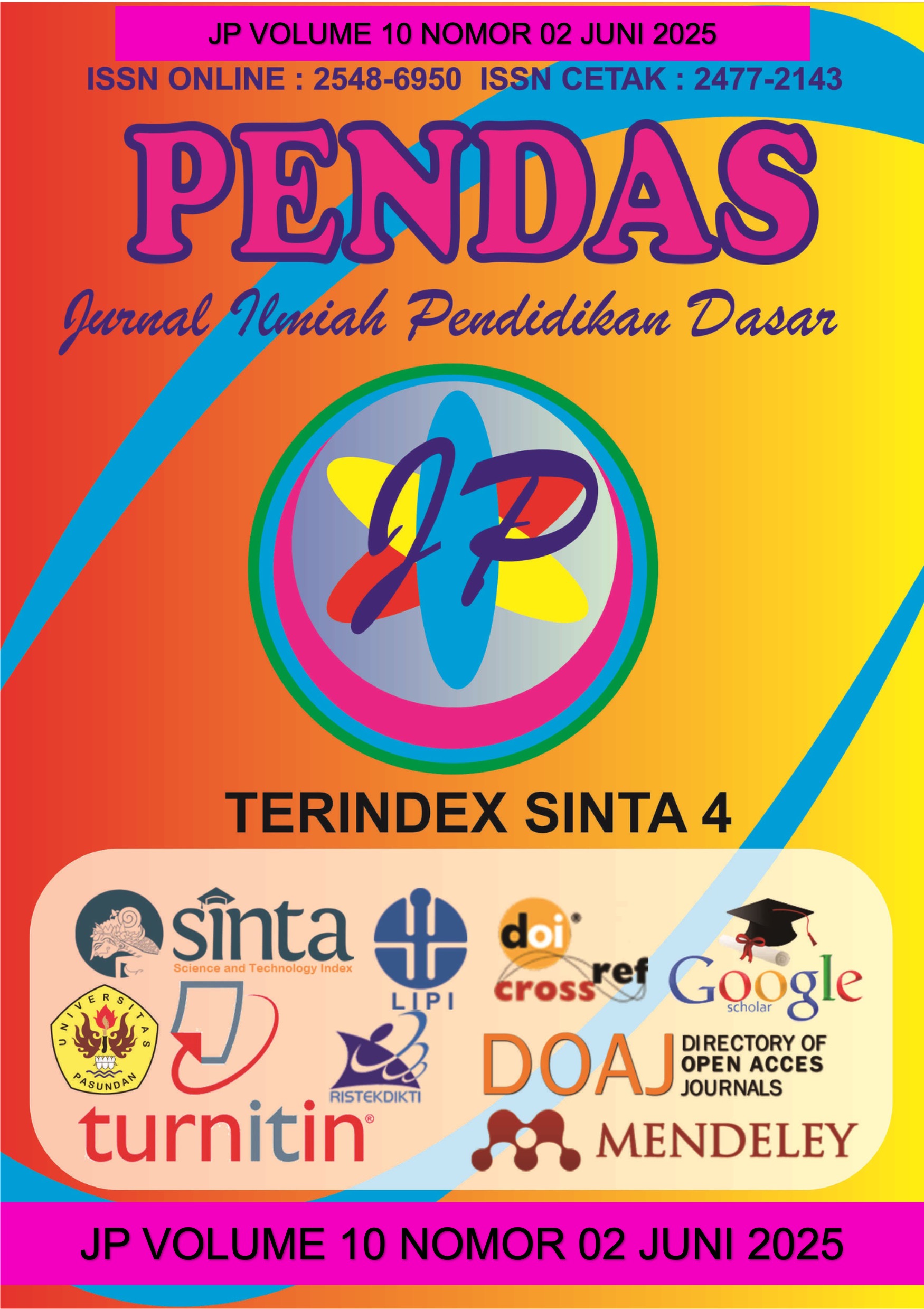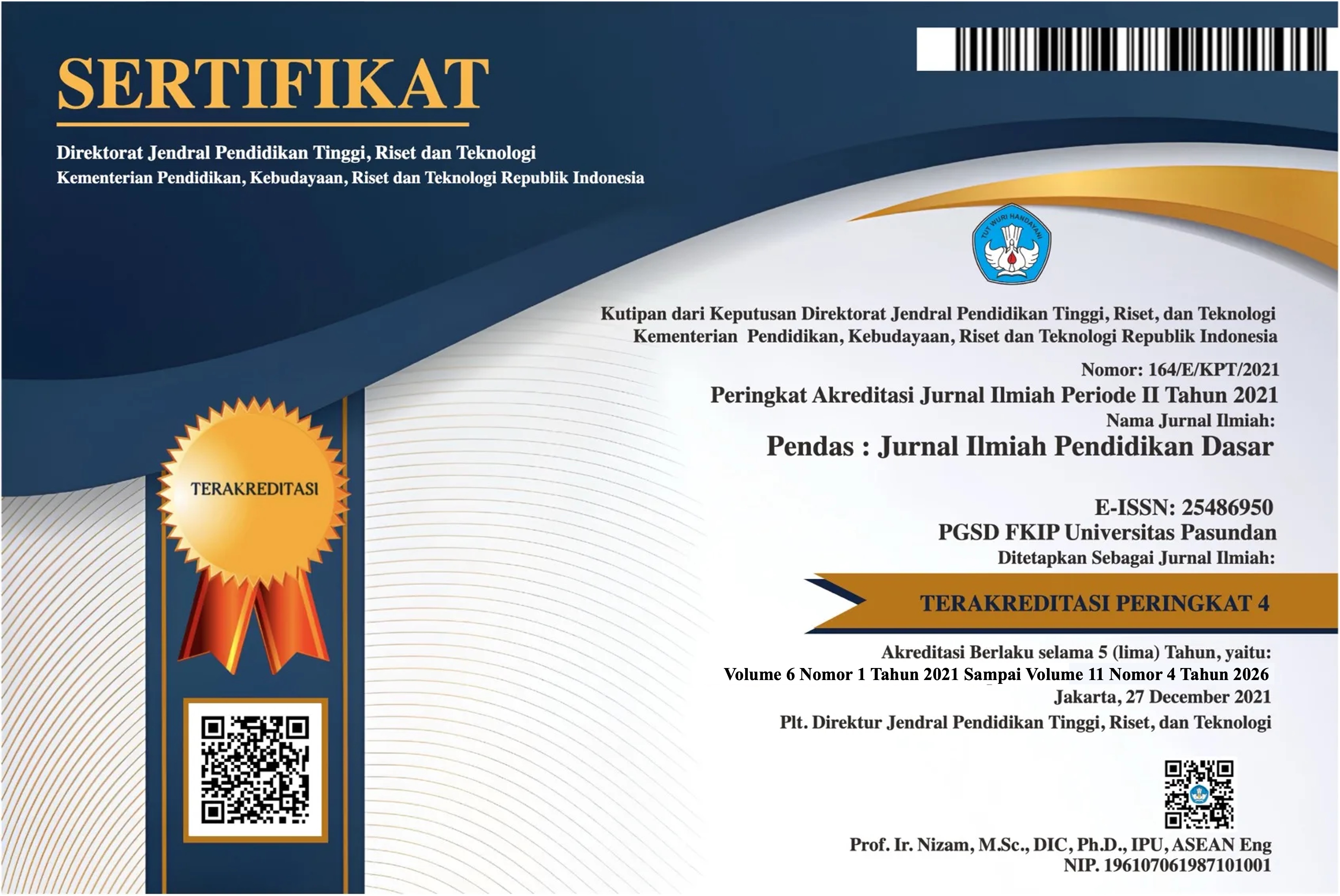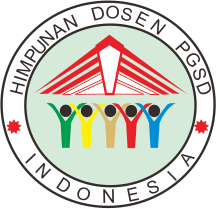PERAN KOMUNIKASI KELUARGA DALAM MENINGKATKAN MOTIVASI BELAJAR SISWA PENDIDIKAN DASAR DI MI NURUL HUDA BANTARGEBANG BEKASI
DOI:
https://doi.org/10.23969/jp.v10i02.24077Keywords:
elementary education,learning motivation,family communicationAbstract
This research aims to explore the role of family communication in enhancing students’ learning motivation at the elementary education level, with a focus on MI Nurul Huda Bantargebang. The study was driven by the observable difference in learning motivation among students, which appeared to correlate with the level of parental involvement and communication. Employing a qualitative descriptive approach, data were collected through in-depth interviews with parents, teachers, and students, as well as participatory observation. The research utilized a case study method, examining students from families with varying degrees of involvement in their children’s education. The findings reveal that active family communication significantly contributes to improving students’ motivation to learn. Students who received emotional support, encouragement, and consistent communication from their parents demonstrated higher levels of engagement, confidence, and enthusiasm in academic activities. This result aligns with interpersonal communication theories and motivation theories such as Self-Determination Theory, which emphasize the role of social and emotional support in fostering intrinsic motivation. Quantitative data through pretest-posttest comparison also showed a higher N-Gain score in students with active parental involvement (0.55) compared to those with less involved parents (0.25). These findings affirm the vital role of family communication as a determinant factor in shaping students’ motivation and overall academic success at the elementary level. Hence, the study provides practical insights for educators and parents to foster effective communication strategies at home in order to support children’s learning development.
Downloads
References
Alimuddin, A. M., & Yuzrizal. (2020). Jurnal Pendidikan dan Pemikiran Islam. Jurnal Pendidikan Dan Pemikiran Islam, 7(2), 113–122. http://conference.kuis.edu.my/pasak2017/images/prosiding/nilaisejagat/10-MAAD-AHMAD.pdf
Dewi, M. P., S, N., & Irdamurni, I. (2020). Perkembangan Bahasa, Emosi, Dan Sosial Anak Usia Sekolah Dasar [Language, Emotional, and Social Development in Primary School-Aged Children]. Jurnal Ilmiah Pendidikan Dasar, 7(1), 1.
Dewi, N. A. K., Zukhri, A., & Dunia, I. K. (2014). Analisis Faktor-Faktor Penyebab Anak Putus Sekolah Usia Pendidikan Dasar di Kecamatan Gerokgak Tahun 2012 / 2013. Jurnal Pendidikan Ekonomi Undiksha, 4(1), 1–12. https://ejournal.undiksha.ac.id/index.php/JJPE/article/view/1898
Fatmawati, F., & Syawal, S. (2024). Gaya Komunikasi Guru dalam Meningkatkan Motivasi Belajar Siswa SD Negeri 165 Asanae Soppeng Universitas Cokroaminoto Makassar. 1.
Khaulani, F., S, N., & Irdamurni, I. (2020). Fase Dan Tugas Perkembangan Anak Sekolah Dasar. Jurnal Ilmiah Pendidikan Dasar, 7(1), 51. https://doi.org/10.30659/pendas.7.1.51-59
Laia, I. (2023). Analisis Komunikasi Guru dengan Siswa dalam Meningkatkan Motivasi Belajar dI SMP Negeri 2 Susua. FAGURU: Jurnal Ilmiah Mahasiswa Keguruan, 2(1), 1–11.
Ma’sumah, Aini, S. N., & Oktaviana, A. W. (2024). Tri Pusat Pendidikan Sebagai Sarana Pendidikan Karakter Anak Sekolah Dasar. Buletin Pengabdian Multidisiplin, 2(1), 09–19. https://doi.org/10.62385/budimul.v2i1.87
Nanda Arumi Handayani, & Masyithoh, S. (2023). Hubungan Antara Perceraian Orang Tua Terhadap Motivasi Belajar Siswa Sekolah Dasar. Jurnal Pendidikan Dasar Dan Keguruan, 8(1), 16–21. https://doi.org/10.47435/jpdk.v8i1.1801
Parianto, P., & Marisa, S. (2022). Komunikasi Verbal dan Non Berbal dalam Pembelajaran. Journal Analytica Islamica, 11(2), 402. https://doi.org/10.30829/jai.v11i2.14123
Siswanto, H. (2016). Permasalahan Pendidikan Dasar Dan Pendidikan Anak Usia Dini. CENDEKIA: Journal of Education and Teaching, 8(2), 137. https://doi.org/10.30957/v8i2.59
Downloads
Published
Issue
Section
License
Copyright (c) 2025 Pendas : Jurnal Ilmiah Pendidikan Dasar

This work is licensed under a Creative Commons Attribution 4.0 International License.



















